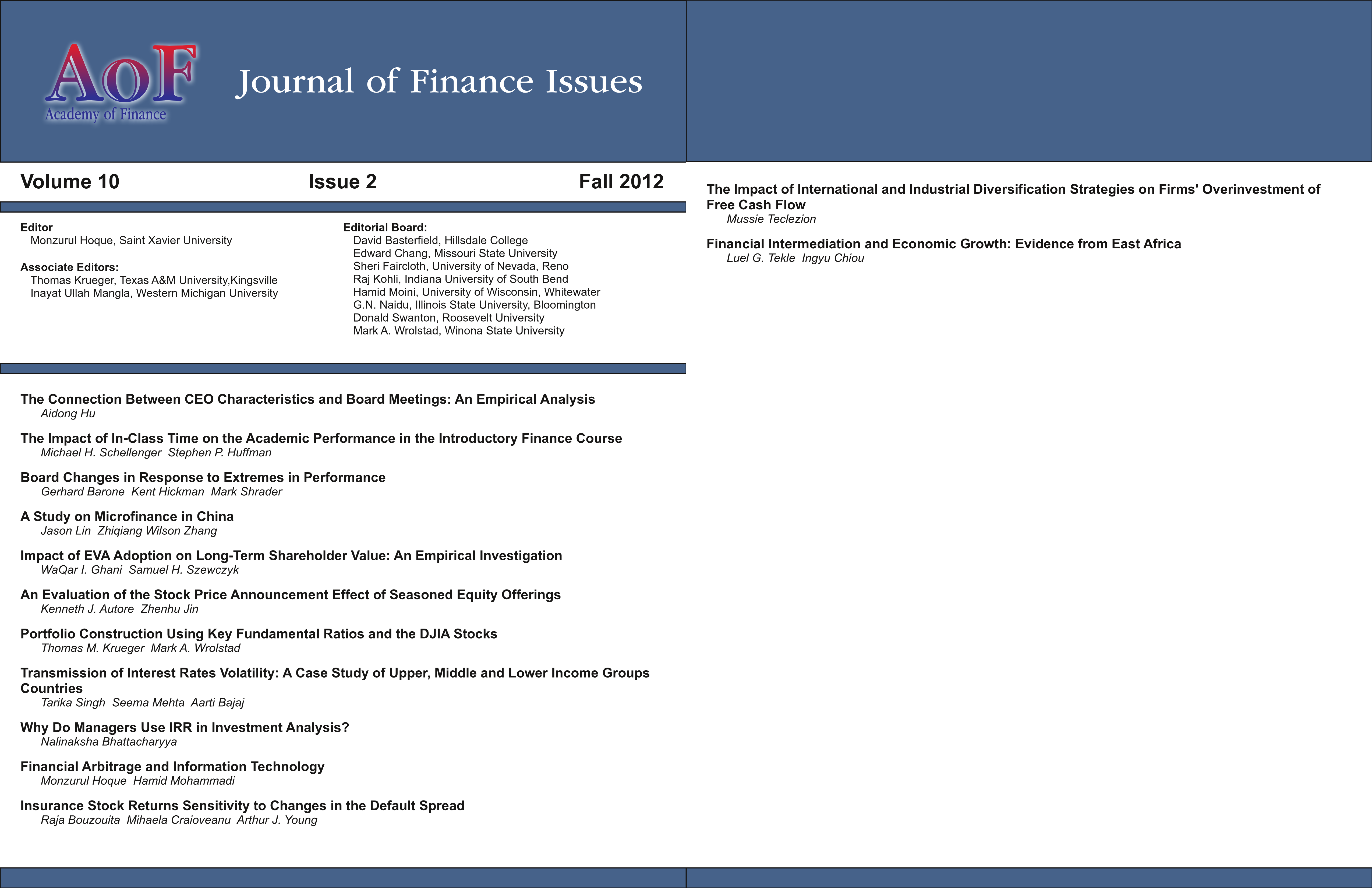Portfolio Construction Using Key Fundamental Ratios and the DJIA Stocks
DOI:
https://doi.org/10.58886/jfi.v10i2.2306Abstract
Index funds have attracted investors over the years by promising to lower fees, turnover, taxes, and other expenses while outperforming the average actively-managed fund. Portfolio indexation has historically focused on three main methods of portfolio weighting: price-weighting, market capitalization-weighting, and occasionally equal-weighting. More recently, attention has been focused on “fundamental weighting” using financial statement items like sales, total assets, EBIT, and dividends to weight stock portfolios. This research focuses on portfolios of the 30 Dow Jones Industrial Average (DJIA) stocks that are
constructed using 15 different metrics. Two of the methods of indexation are the traditional approaches of price and market capitalization and the other 13 methods of indexation are ratios based upon the DuPont equation, price relatives, and operating cash flows. After the decade studied, the portfolio with the highest terminal value for the $1000 originally invested was the $1198 of the Operating Cash Flow (OCF) / Current Liabilities indexed portfolio and the lowest
terminal value was the $670 for the Price/Sales indexed portfolio. The OCF / Current Liabilities, OCF / Total Debt, and OCF / Net Income-based portfolios all show significantly better performance at the 2% to 5% level when compared to the market value-weighted portfolio. None of these ratios had an abnormal level of skewness or kurtosis, which would have minimized the implications of these findings. Across the financial statements, the cash flow statement appears to provide the most fertile ground for above average rates of return to the passive, long-term investor.





